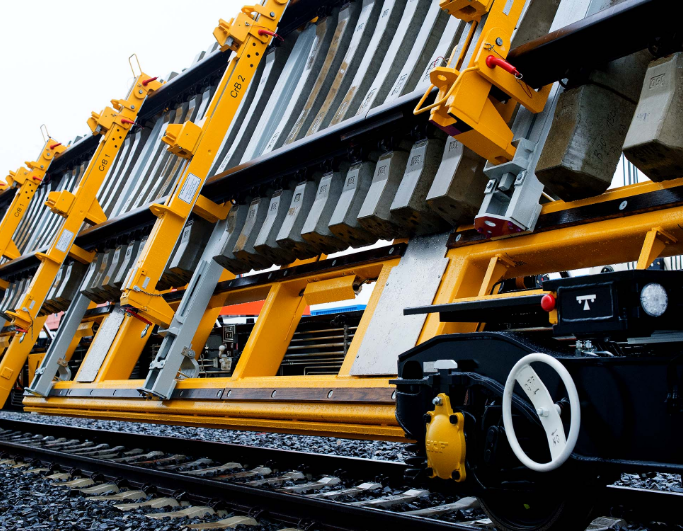Know when to upgrade your railway equipment — and why it matters
Keeping railway operations efficient and safe starts with using the right equipment. Over time, even the most robust machines can show signs of ageing, reducing performance and increasing operational risks. But how do you know when it’s time to upgrade?
In this guide, we explore how to identify outdated or underperforming equipment, what to consider before making a new investment, and how upgrades can impact your return on investment (ROI).

1. Spotting the signs of wear, ageing, or inefficiency
The first step in deciding whether it’s time for an upgrade is knowing what to look for. Frequent breakdowns, unusual noises, slower performance, or outdated interfaces are all red flags.
Older equipment may still function, but that doesn’t mean it’s performing efficiently. In many cases, machines designed 20+ years ago can’t meet the demands of modern rail systems or comply with evolving safety standards.
Pro tip: Compare your equipment’s specs and features with current industry standards. If your current setup lacks automation, digital controls, or energy-efficient systems, it may be costing you more than you think.
2. Evaluating performance and hidden maintenance costs

Recurring maintenance might seem manageable — until you calculate the downtime, labour hours, and replacement parts. Ageing equipment often leads to unplanned delays, impacting both productivity and budget.
Railquip supports railway companies by helping assess the total cost of ownership (TCO) of their existing systems, uncovering areas where newer technology could lead to cost savings.
3. Trade-in and upgrade options can ease the transition
The idea of replacing an entire system can feel overwhelming, but many companies overlook trade-in and retrofit options. In some cases, Railquip can evaluate older equipment for possible refurbishment or offer trade-in solutions that reduce upfront costs on new systems.
Whether you’re updating a single machine or modernising an entire fleet, our team ensures the transition is seamless — with minimal disruption to operations.
4. Investing in upgrades to improve ROI
Upgrading isn’t just about replacing old gear — it’s about unlocking new capabilities. Modern railway equipment often includes enhanced safety features, faster deployment, digital integration, and increased adaptability.
All of these factors contribute to better ROI through:
- Reduced downtime
- Lower maintenance costs
- Improved efficiency and response times
- Extended equipment lifespan
- Railquip’s German-engineered solutions are designed for long-term performance, helping you get the most out of every dollar invested.

5. Budget planning for equipment upgrades
How much should you set aside for new equipment? That depends on your network size, the condition of current tools, and whether you’re upgrading partially or entirely.
Railquip helps railway operators evaluate their upgrade needs with:
- Custom quotes based on operational requirements
- Lifecycle cost analysis
- Guidance on prioritising upgrades for maximum impact
Our experts can help you plan both immediate needs and long-term improvements, ensuring your budget is invested where it matters most.
Conclusion
Modernising your railway equipment is more than a technical decision — it’s a strategic one. Recognising when to upgrade ensures your operation remains safe, efficient, and ready to meet today’s challenges.
From spotting early signs of wear to understanding the ROI of new systems, being proactive about equipment upgrades can transform the way your railway operates.
Not sure if your current equipment is holding you back?
Let Railquip’s expert team evaluate your setup and guide you through upgrade options tailored to your network.
Contact us to learn more about trade-in opportunities, cost-saving upgrades, and how to future-proof your railway operations with the right tools.
